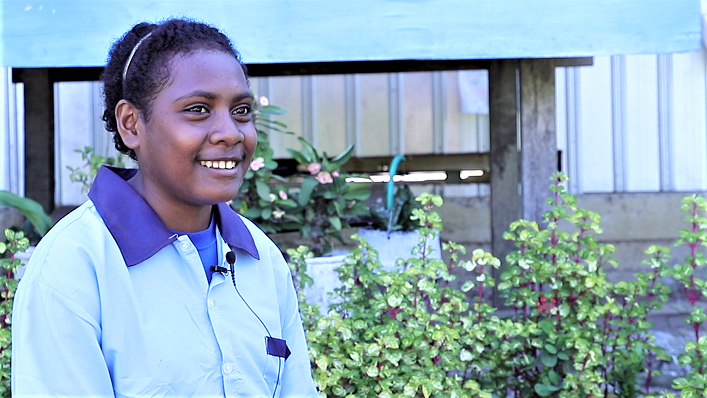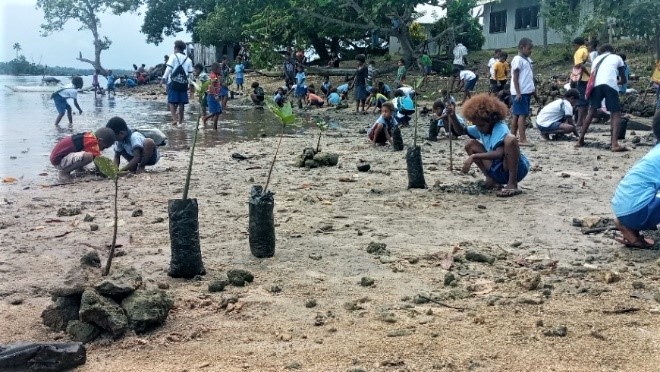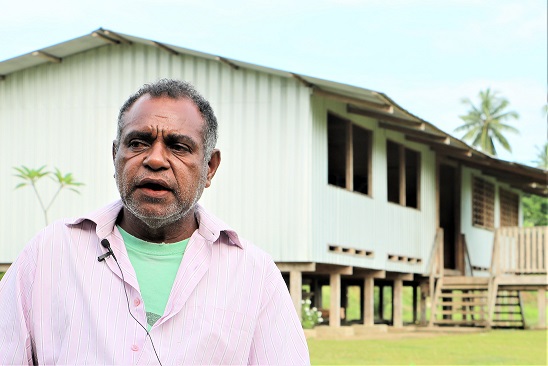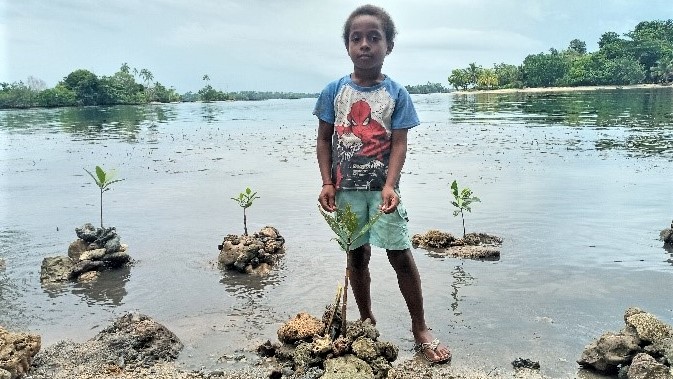Children plant mangrove trees to address climate change
“Planting mangrove is important because it can protect us from rising sea levels and be a home for small fish to breed”, says Stephanie.
Stephanie was among 600 school children who took part in planting 700 mangrove seeds along the coastline of Riwo in Madang Province to celebrate World Environment Day on June 11, with the theme - Ecosystem Restoration.
Through the Child Focus Disaster Risk Reduction (CFDRR) project, children like Stephanie have the opportunity to learn about the ecological importance and different uses of mangroves as a natural defense of the coastlines, swamps and breading space for fish stocks.

“Mangrove trees in swampy or coastal areas provide a safe and rich habitat for different fish stocks to rest, feed, recover and breed. Fish brings protein and income for families,” says Dehaan Lapawe, CFDRR Project Coordinator.
He affirmed that Mangrove trees, once matured will provide shelter for the land by reducing effect of waves and build sediments. It also provides a home for the birds and substitutes lost mangroves. Adding that mangrove seeds can also be consumed as a food source in some parts of Papua New Guinea.
“This is one way to be disaster ready. Community must continue this initiative to reduce soil erosion and help protect their schools and community, “he says.
The CRDRR Project is implemented in Riwo village by World Vision in partnership with the Madang Provincial Disaster office and funding support from the Australian Government through the Australian Humanitarian Partnership (AHP).
The study - Beyond Barriers: Integrating disaster risk Reduction and climate change adaptation in the Pacific (July 2021) confirms that gradual effects of climate change such as rising sea levels becomes a concern because with increased frequency, this contributes to hazards such as soil erosion.
Hence the initiative taken by the CFDRR project to counter climate change impacts through climate change adaptation and disaster risk reduction by focusing on the most vulnerable – children both able and with special needs in schools; and in their surrounding communities.

Sixtus Baleng, the Head teacher of Malmal Primary School says the initiative is timely because soil erosion caused by rising sea levels and strong sea surges is a new fact of life that is being faced by people in the community, adding that smaller and low laying islands are disappearing and the mainland has become exposed and vulnerable.
“Mangroves trees in Riwo and Malmal swamps and coastal areas were cut and used by locals for building houses, fuel-wood, making canoes and other artefacts of cultural importance over time. Unfortunately no replacement has been made, “he adds.

He says the importance and use of mangrove as buffer to protect shoreline and a breeding sites for fish is new knowledge for students and thanked World Vision’s CFDRR Project for taking such an initiative.
Rudolph Mongallee, Madang Provincial Government’s Disaster Manager and the focal point for climate change in the province says that his office cannot perform as it should to counter the impacts of climate change and disaster preparedness within the province because of reasons beyond his control.

However, he adds that the working partnership is peaceful and cordial and he is very supportive of activities undertaken and implemented by World Vision regarding disaster preparedness in the province.
“I’m only wishing that if World Vision can extend to the other six districts, because those districts that World has already entered, I see that they’re already disaster prepared,” says Mr. Mongallee.
Benedict from Malmal Primary School who was also among students who took part in the planting of mangrove seedlings says, “I will look after my tree and my village and school”.